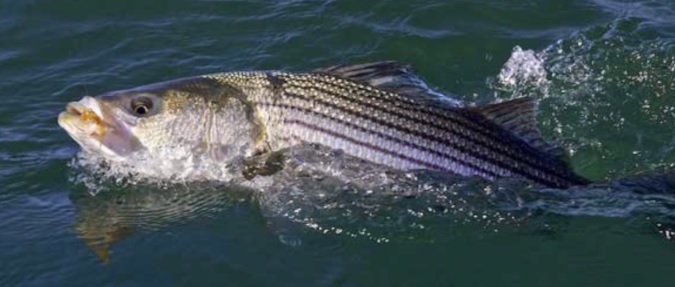
Help us fund this groundbreaking research project to better understand Atlantic Striped Bass.
Our mission is to support the sport fishing industry and overall fishing community while producing valuable data to marine science research. Gray FishTag Research is committed to expanding our knowledge of striped bass behavior and sharing it with the science community in an effort to sustain our fisheries for future generations
100 % of all proceeds will be used to purchased Pop-up Satellite Archival (PSAT) tags, conventional tags, applicators and research equipment for this ongoing study. The research team will deploy tags on striped bass throughout the northeastern United States.
Together, researchers at Gray FishTag Research, Paul Michele of Navionics, and Michael Caruso of The Fisherman Magazine have developed a study with a progressive objective to pioneer a new level of understanding about Atlantic striped bass.
PSATs are designed to track the large-scale movements and behavior of fish. Tags collect hourly temperature, pressure, and light data while on the fish and once the tag pops off at the pre-programmed date, it will float to the surface and relay daily summaries of the stored data via satellites back to Gray FishTag Research. The tracks from the striped bass will be generated using the light data and then plotted on Navionics charts for all to see!
All the information that is produced from the tags are OPEN ACCESS and will be shared with all interested parties at NO COST!
The striped bass fishery supports one of the most important recreational fisheries along the Atlantic coast, and it is unique in that it supplies equal angling opportunities for inshore beach and offshore boat anglers. They provide recreational opportunities from the quietest stretches of beach and marshlands, to city bulkheads, rivers and major shipping channels.
Striped bass are an anadromous species that undertake a seasonal migration from coastal marine waters, through estuaries, and into freshwater for spawning. Striped bass spawn each spring in the freshwater reaches of major river and estuary systems including the Chesapeake Bay, the Hudson River, Delaware Bay, and the Roanoke River. Of these areas, the Chesapeake Bay is considered the largest and most productive spawning ground contributing upwards of 90% of young-of-the-year (YOY) individuals in some years.
Despite their status as a top gamefish, they are now being confronted with some serious management challenges. Anglers are reporting that they are observing large quantities of stripers in new and different areas, and less in the usual locals.
Therefore, we are excited and proud to begin a project that gives us a chance to bring further insight into striped bass habitat and movement research.
Related articles on stripers – https://www.odumagazine.com/?s=striped+bass
